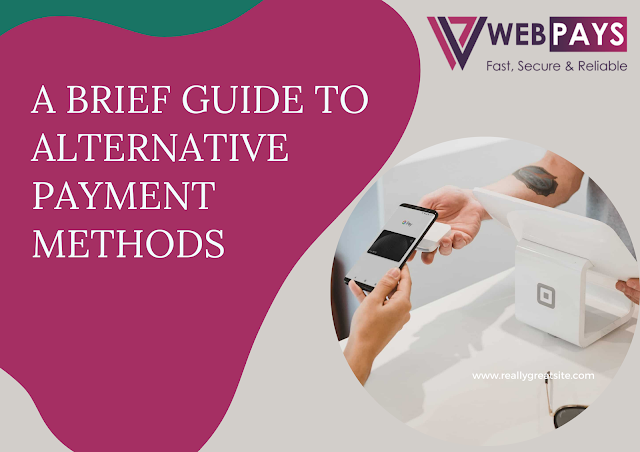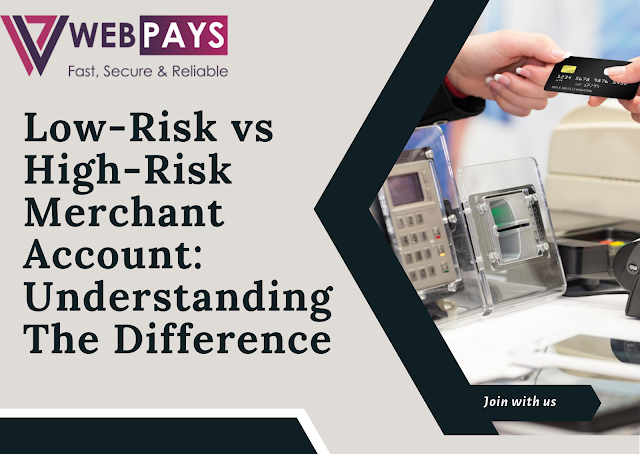A Brief Guide To Alternative Payment Methods
In today's ever-evolving digital market,
simply relying on traditional credit card payment solutions may not suffice.
That's where Alternative Payment Methods
(APMs) step in to offer a more diverse range of options. High Risk merchant solutions
specialize in providing tailored APMs, specifically designed to cater to
businesses deemed high risk payment
processing. This brief guide dives into the world of Alternative Payment
Methods (APMs), exploring the growing popularity of these options and how they
can benefit your business. APMs can
unlock a whole new customer base, streamline your checkout process, and boost
your sales in today's dynamic market. Read on.
What
Are Alternative Payment Methods?
Alternative payment methods are simply
different ways to pay for things besides using credit or debit cards. They
offer more options for paying online and can include things like digital
wallets (like PayPal or Apple Pay), bank transfers, mobile payments,
cryptocurrencies (like Bitcoin), and buy now, pay later plans. These methods
give people more choices and make paying for things online easier and more
convenient. Furthermore, having an alternative payment
methods lets your customers pay as per their preferred way (Whether
dealing with high risk payment
processing or forex payment
processing) which leads to a stronger bond with your customers. However,
there are various types of APMs which we will discuss in below section
meticulously.
Major
Types of Alternative Payment Methods
In the world of online transactions, credit
cards have reigned supreme for a long time. However, with the evolving digital
landscape and changing consumer preferences,
(APMs) are gaining serious ground. These APMs offer multiple options for
customers to pay for goods & services. Let's look at some major types of
alternative payment methods:
1.
Digital Wallets:
Convenience is king! Digital wallets store
users' credit card, debit card, or bank account information securely, allowing
for swift and hassle-free checkouts. Gone are the days of manually entering
details at every purchase. A simple tap or click with your phone using Apple
Pay, Google Pay, or PayPal is all it takes.
2.
Buy Now, Pay Later (BNPL):
Offering greater flexibility to customers,
BNPL services let them split their purchases into smaller, manageable
installments. Often, these services come with zero interest charges if the
balance is paid within a predetermined timeframe. Klarna and Afterpay are
popular examples of BNPL providers.
3.
Bank Transfers:
This method offers a direct and secure way
to transfer funds. Customers can initiate a direct bank transfer from their
bank account to the merchant's account, ensuring a smooth and transparent
transaction.
4.
Mobile Wallets:
Similar to digital wallets, mobile wallets
offer a convenient payment option. However, they are typically linked to a
specific telecommunications provider. Users can pay for goods and services by
charging the amount to their mobile phone bill, adding a layer of convenience.
5.
Cash on Delivery (COD):
This traditional method caters to customers
who prefer to pay with physical cash upon receiving their order. While offering
a sense of security for some, COD can add logistical complexities for
businesses.
Benefits
of Alternative Payment Methods:
The key benefits of alternative payment
methods are as follows:
1.
Convenience:
Alternative payment methods offer users the
flexibility to make purchases anytime, anywhere, using their preferred payment
option, whether it's a digital wallet, bank transfer, or mobile payment.
2.
Security:
Many alternative payment methods use
advanced encryption and security protocols to protect users' financial
information, reducing the risk of fraud and unauthorized transactions.
3.
Accessibility:
Alternative payment methods cater to a
wider range of consumers, including those who may not have access to
traditional banking services or credit cards.
4.
Cost Savings:
Some alternative payment methods offer
lower transaction fees or no fees at all, helping businesses reduce their
payment processing costs and potentially increase their profit margins.
5.
International Reach:
Alternative payment methods often support
cross-border transactions, making it easier for businesses to reach global
markets and for consumers to shop from international merchants.
Why
Should You Consider Alternative Payment Methods?
While credit cards have been the trusty
steed of online transactions for a long time, there's a growing herd of (APMs)
galloping into the picture. But why should you, as a business owner or
entrepreneur, consider offering these new options? Here's a breakdown of the
major reasons to embrace APMs:
Expand
Your Customer Base:
Not everyone has a credit card, or some
might prefer not to use them online. By offering APMs like digital wallets
(Apple Pay, Google Pay) or buy now, pay later (BNPL) options (Klarna,
Afterpay), you open your doors to a whole new segment of potential customers.
Boost
Sales & Reduce Cart Abandonment:
A smooth checkout process is like a
frictionless highway to sales conversions. APMs like digital wallets allow
customers to pay with a single click, eliminating the hassle of entering card
details. This translates to a faster and more convenient experience, reducing
cart abandonment rates and leading to more completed purchases.
Enhanced
Security Features:
Security is paramount in the online world.
Some APMs offer advanced security measures like multi-factor authentication,
adding an extra layer of protection against fraud. This not only safeguards
your business from financial losses but also instills trust and confidence in
your customers.
Catering
to Diverse Preferences:
Not everyone fits the same pot. APMs offer
a wider range of payment options to cater to individual preferences. Whether a customer prioritizes speed (digital
wallets), flexibility (BNPL), or the familiarity of cash on delivery (COD),
APMs provide the freedom to choose from, leading to a more satisfying customer
experience.
Conclusion:
In a gist, embracing APMs is crucial in
today's evolving digital landscape. While credit card payment solutions have been the norm, APMs offer a
plethora of benefits. From a successful high risk payment
expanding your customer base to reducing cart abandonment rates, these
methods enhance convenience, security, and accessibility for both businesses
and customers. By considering APMs, you are not just adapting to change but
also positioning your business for sustained growth and success in the
competitive online marketplace.



Comments
Post a Comment